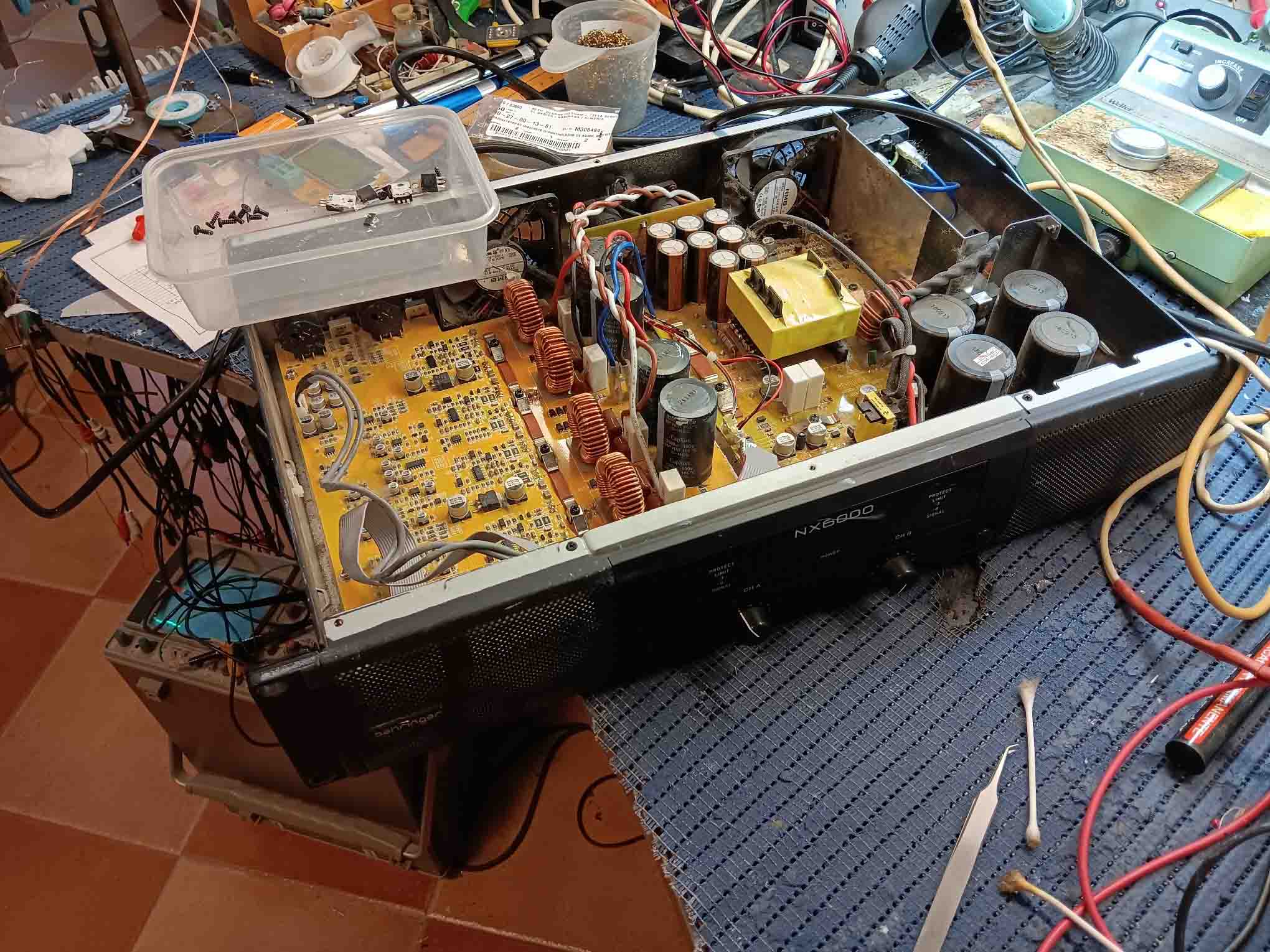
Behringer NX6000
I keep telling myself not to take on these CLASS D amplifiers. But, what happens? These things can be very unforgiving and a bottomless pit for eating new components.
This one came in showing protection mode on both channels. Off with the lid and a quick check around the MOSFETs in circuit showed some odd readings. Now the big thing here, is not to go in quickly and replace the faulty MOSFETs and power it up thinking you will be off to the pub in 10 minutes.
The odd thing with this amplifier was that, with the main audio board removed (no longer available as a spares item), the faulty MOSFETs were not short circuit, but had leaky gates. With all these snipped out, 4 were found to be duff. Whenever you get this situation, the first thing to do, as far as possible, is to check all the surrounding SMD components. One 10 Ohm resistor was found to be open. It is important that without the MOSFETs in, you power the amp up to check the operation of the CLASS D controller ICs, IRS20957S. If the gate control output is not correct, change these devices. In fact as a precaution, I would replace the horrid things as a matter of course. They tend to roll over and feint if you look at them sideways, they are very WOKE. With all MOSFETs changed, ICs replaced and faulty resistors, grab your lucky Rabbit’s foot and apply power. In this case, all was well.
I know you get a lot of I squared R for your money with CLASS D and yes, I will say very efficient. I think this thing is rated at 10 Megawatts per channel into 1 Ohm. But, being an old traditional git, its not the same as true analogue. Scoping the speaker connections you still see a lot of unfiltered digital switching noise. You cant hear it, but its hiding.





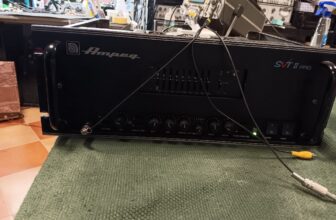
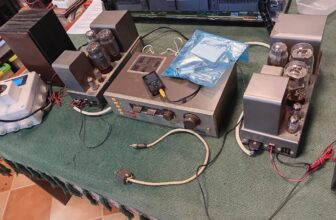
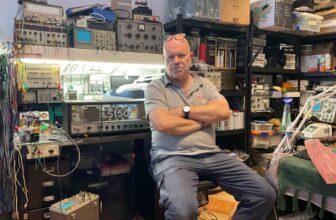
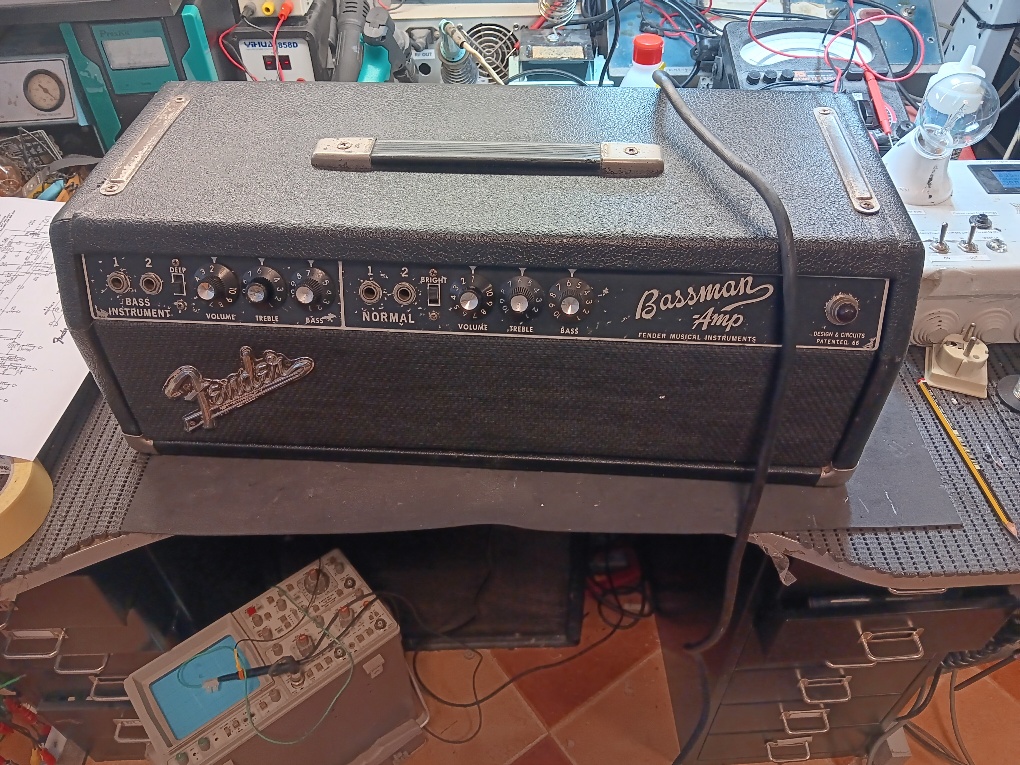
Another insightful report, thank you and yes class D has its place but not in high end audio.
No i wont define high end!